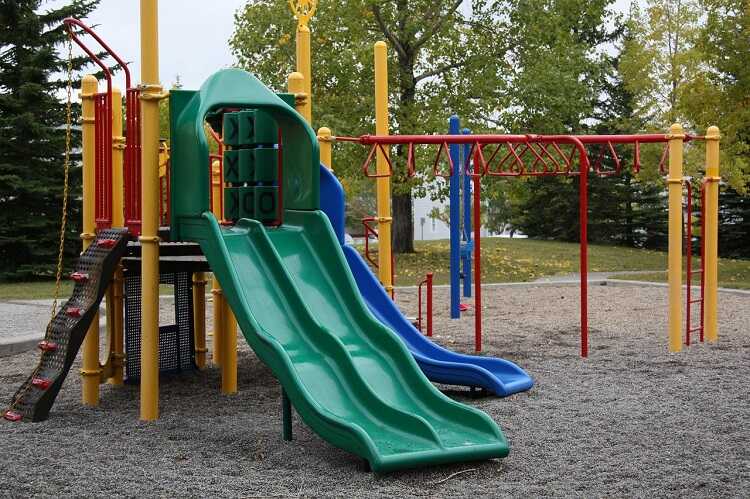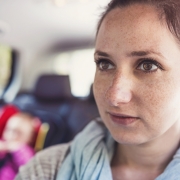Strategies to use for the park with your child with autism
Visiting the park with a child on the autism spectrum can be a joyful and enriching experience—but without the right strategies, it can also become overwhelming. Many children with autism are sensitive to new environments, unexpected sensory input, or changes in routine, which can lead to stress or meltdowns. With a little planning and awareness, however, parents and caregivers can create positive, successful park outings that support their child’s comfort and confidence in community settings.
What’s Inside:
- Common Challenges for children with autism at the park
- How parents can prepare children with autism for the park
- How ABA Therapy Can Support Park Visits
- Meeting Your Child Where They Are
- Key Takeaways

Common Challenges for children with autism at the park
The park is one place where children typically enjoy their freedom and thrive, which can be a nice relief for many parents. Although, for parents of children with autism, this can be a stressful situation for many reasons.
- Children with autism may not have the social skills to play with other children and they may not interact in ways that are socially appropriate.
- Some children might have the tendency to run or wander away (elope).
- Other children may have difficulties with transitions and therefore, leaving the park is always a struggle for the parent of a child with autism, more so than that of a parent of a typically developing child.
Nevertheless, there are some strategies for parents of children with autism to practice to help relieve some of these stressors and make the park a more enjoyable experience for everyone.
How parents can prepare children with autism for the park
The key to going to the park is to plan and prepare ahead of time. Give lots of warnings to help minimize the meltdowns. Predictability allows the child to feel more secure. When they feel uncomfortable and out of control is when the meltdown is triggered.
Tips on how to prepare:
- Let the child have a say. Ask them what they would like to try first at the park.
- Share the schedule. Let them know what to expect. If transitions are difficult, let your child know from the time of arrival how much time he or she will have at the park. Have a visual countdown (e.g., boxes that are crossed off every 5 minutes) until it is time to leave. If your child prefers electronics and timers, start a timer on a phone or electronic device instead.
- Stick to the schedule. Prepare to leave. Have an exit strategy. Provide reminders when time is almost up, so your child is not “surprised” when it is time to transition. When time is up, it helps to have something positive that your child can look forward to after the park (e.g., frozen yogurt, pick up brother, dinner, or treat in the car).
- Start small. Try not to overload them by having them try everything at the park. Take one thing like the swings and show them how you use the swing.
- Bring identification. If your child tends to wander or run away you might want to consider having identification. You might tell yourself that you will be close by, but it is always better to be safe than sorry.
- Facilitate the play. Consider sparking interest in your child for other people, activities, toys, and conversations by pointing these out in his or her environment: “Wow, those kids are going down the slide really fast, that looks fun!” or “That boy has a really cool race car, maybe you can ask to see it?” These are minimally intrusive ways to promote engagement with surrounding people, objects, and activities.
- Prepare a To-Go bag with calming tools.
- Sunglasses
- A wide-brimmed hat
- Fidget toys
- Stuffed toy
- Chewing gum
- Weighted blanket
- Bottled water and healthy snacks
With repeated exposure and positive interactions with people and activities at the park, your child’s positive engagement at the park may be reinforced over time. In other words, it may get stronger, and more frequent, and trips to the park can turn into something he looks forward to.

How ABA Therapy Can Support Park Visits
Play is a powerful way for children to learn—and ABA (Applied Behavior Analysis) therapy can be a valuable tool in helping children with autism build the skills they need to enjoy the park. Using naturalistic teaching strategies, ABA therapy introduces key social and behavioral skills in real-world settings, like the playground, where learning can happen organically and at a child’s own pace.
ABA therapy can help your child:
- Learn to take turns with peers
- Use playground equipment safely and appropriately
- Follow simple directions and routines
The goal is to create a safe, supportive experience where your child can explore, have fun, and develop confidence in community spaces like the park.
Meeting Your Child Where They Are
Remember, not every child will love the park—and that’s perfectly okay. If your child becomes overwhelmed or doesn’t enjoy being at the playground, don’t feel discouraged. Every child is unique, and forcing the experience may increase anxiety or stress.
Instead, consider alternative sensory-friendly environments where your child may feel more comfortable, such as:
- Children’s museums
- Adaptive theme parks
- Sensory-friendly movie theaters
What matters most is that your child has opportunities for joyful, meaningful play in a setting that suits their needs. Follow their lead, and celebrate the small wins—wherever they happen.
Key Takeways:
- Plan Ahead for Predictability
Providing advance notice and setting clear expectations can help minimize meltdowns. Using visual schedules or timers can assist children in understanding the sequence of activities and transitions. - Involve Your Child in Decision-Making
Allowing your child to choose activities at the park can increase their comfort and engagement. Starting with preferred activities can make the experience more enjoyable. - Prepare for Safety and Comfort
Bringing items like identification tags, calming tools (e.g., fidget toys, weighted blankets), and essentials (e.g., water, snacks) can ensure your child’s safety and comfort during the park visit. - Encourage Social Interaction Gently
Facilitating interest in other children and activities by making observations can promote social engagement without overwhelming your child.
Related Glossary Terms
Other Related Articles
- Grocery shopping with your child with autism
- Smooth Skies Ahead: A Parent’s Guide to Air Travel with Children with Autism
- Transition strategies for autistic students
- Traveling with your child with autism
- Using Time Warnings To Help Students With Autism
Frequently asked questions about ABA therapy
What is ABA Therapy used for?
ABA-based therapy can be used in a multitude of areas. Currently, these interventions are used primarily with individuals living with ASD; however, their applications can be used with individuals living with pervasive developmental disorders as well as other disorders. For ASD, it can be used in effectively teaching specific skills that may not be in a child’s repertoire of skills to help him/her function better in their environment whether that be at home, school, or out in the community. In conjunction with skill acquisition programs, ABA-based interventions can also be used in addressing behavioral excesses (e.g., tantrum behaviors, aggressive behaviors, self-injurious behaviors). Lastly, it can also be utilized in parent/caregiver training.
In skill acquisition programs, a child’s repertoire of skills is assessed in the beginning phase of the services in key adaptive areas such as communication/language, self-help, social skills, and motor skills as well. Once skills to be taught are identified, a goal for each skill is developed and then addressed/taught by using ABA-based techniques to teach those important skills. Ultimately, an ABA-based therapy will facilitate a degree of maintenance (i.e., the child can still perform the learned behaviors in the absence of training/intervention over time) and generalization (i.e., the learned behaviors are observed to occur in situations different from the instructional setting). These two concepts are very important in any ABA-based intervention.
In behavior management, the challenging behaviors are assessed for their function in the beginning phase of the services. In this phase, the “why does this behavior happen in the first place?” is determined. Once known, an ABA-based therapy will be developed to not just decrease the occurrence of the behavior being addressed, but also teach the child a functionally-equivalent behavior that is socially-appropriate. For example, if a child resorts to tantrum behaviors when she is told she cannot have a specific item, she may be taught to accept an alternative or find an alternative for herself. Of course, we can only do this up to a certain point—the offering of alternatives. There comes a point when a ‘no’ means ‘no’ so the tantrum behavior will be left to run its course (i.e., to continue until it ceases). This is never easy and will take some time for parents/caregivers to get used to, but research has shown that over time and consistent application of an ABA-based behavior management program, the challenging behavior will get better.
In parent training, individuals that provide care for a child may receive customized “curriculum” that best fit their situation. A typical area covered in parent training is teaching responsible adults pertinent ABA-based concepts to help adults understand the rationale behind interventions that are being used in their child’s ABA-based services. Another area covered in parent training is teaching adults specific skill acquisition programs and/or behavior management programs that they will implement during family time. Other areas covered in parent training may be data collection, how to facilitate maintenance, how to facilitate generalization of learned skills to name a few.
There is no “one format” that will fit all children and their families’ needs. The ABA professionals you’re currently working with, with your participation, will develop an ABA-based treatment package that will best fit your child’s and your family’s needs. For more information regarding this topic, we encourage you to speak with your BCBA or reach out to us at info@leafwingcenter.org.
Who Can Benefit From ABA Therapy?
There is a common misconception that the principles of ABA are specific to Autism. This is not the case. The principles and methods of ABA are scientifically backed and can be applied to any individual. With that said, the U.S. Surgeon General and the American Psychological Association consider ABA to be an evidence based practice. Forty years of extensive literature have documented ABA therapy as an effective and successful practice to reduce problem behavior and increase skills for individuals with intellectual disabilities and Autism Spectrum Disorders (ASD). Children, teenagers, and adults with ASD can benefit from ABA therapy. Especially when started early, ABA therapy can benefit individuals by targeting challenging behaviors, attention skills, play skills, communication, motor, social, and other skills. Individuals with other developmental challenges such as ADHD or intellectual disability can benefit from ABA therapy as well. While early intervention has been demonstrated to lead to more significant treatment outcomes, there is no specific age at which ABA therapy ceases to be helpful.
Additionally, parents and caregivers of individuals living with ASD can also benefit from the principles of ABA. Depending on the needs of your loved one, the use of specified ABA techniques in addition to 1:1 services, may help produce more desirable treatment outcomes. The term “caregiver training” is common in ABA services and refers to the individualized instruction that a BCBA or ABA Supervisor provides to parents and caregivers. This typically involves a combination of individualized ABA techniques and methods parents and caregivers can use outside of 1:1 sessions to facilitate ongoing progress in specified areas.
ABA therapy can help people living with ASD, intellectual disability, and other developmental challenges achieve their goals and live higher quality lives.
What does ABA Therapy look like?
Agencies that provide ABA-based services in the home-setting are more likely to implement ABA services similarly than doing the same exact protocols or procedures. Regardless, an ABA agency under the guidance of a Board-Certified Behavior Analyst follows the same research-based theories to guide treatment that all other acceptable ABA agencies use.
ABA-based services start with a functional behavior assessment (FBA). In a nutshell, a FBA assesses why the behaviors may be happening in the first place. From there, the FBA will also determine the best way to address the difficulties using tactics that have been proven effective over time with a focus on behavioral replacement versus simple elimination of a problem behavior. The FBA will also have recommendations for other relevant skills/behaviors to be taught and parent skills that can be taught in a parent training format to name a few. From there, the intensity of the ABA-based services is determined, again, based on the clinical needs of your child. The completed FBA is then submitted to the funding source for approval.
One-on-one sessions between a behavior technician and your child will start once services are approved. The duration per session and the frequency of these sessions per week/month will all depend on how many hours your child’s ABA services have been approved for—usually, this will be the number recommended in the FBA. The sessions are used to teach identified skills/behaviors via effective teaching procedures. Another aspect of ABA-based services in the home-setting is parent training. Parent training can take many forms depending on what goals have been established during the FBA process. The number of hours dedicated for parent training is also variable and solely depends on the clinical need for it. If a 1:1 session is between a behavior technician and your child, a parent training session or appointment is between you and the case supervisor and with and without your child present, depending on the parent goal(s) identified. Parent training service’s goal is for you to be able to have ample skills/knowledge in order for you to become more effective in addressing behavioral difficulties as they occur outside of scheduled ABA sessions. Depending on the goals established, you may be required to participate in your child’s 1:1 sessions. These participations are a good way for you to practice what you have learned from the case supervisor while at the same time, having the behavior technician available to you to give you feedback as you practice on those new skills.
As mentioned in the beginning, no two ABA agencies will do the same exact thing when it comes to providing ABA services; however, good agencies will always base their practice on the same empirically-proven procedures.
How do I start ABA Therapy?
In most cases, the first item required to start ABA therapy is the individual’s autism spectrum disorder (ASD) diagnosis report. This is typically conducted by a doctor such as a psychiatrist, psychologist, or a developmental pediatrician. Most ABA therapy agencies and insurance companies will ask for a copy of this diagnosis report during the intake process as it is required to request an ABA assessment authorization from the individual’s medical insurance provider.
The second item required to start ABA therapy is a funding source. In the United States, and in cases where Medi-Cal or Medicare insurances are involved, there is a legal requirement for ABA services to be covered when there is a medical necessity (ASD diagnosis). Medi-Cal and Medicare cover all medically necessary behavioral health treatment services for beneficiaries. This typically includes children diagnosed with ASD. Since Applied Behavior Analysis is an evidence based and effective treatment for individuals with ASD, it is considered a covered treatment when medically necessary. In many cases, private insurance will also cover ABA services when medically necessary, however in these cases, it is best to speak directly with your medical insurance provider to determine the specifics of the coverage and to ensure that ABA is in fact, a covered benefit. Additionally, some families opt to pay for ABA services out-of-pocket.
The next step to starting ABA therapy is to contact an ABA provider whom you are interested in working with. Depending on your geographic location, ABA agencies exist in many cities across the United States. Your insurance carrier, local support groups, and even a thorough online search can help you find reputable and properly credentialed ABA agencies near you. Our organization, LeafWing Center, is based in southern California and is recognized for aiding people with ASD achieve their goals with the research based on applied behavior analysis.
Once you have identified the ABA provider with whom you wish to work, they should help you facilitate the next steps. These will include facilitating paperwork and authorizations with your funding source. Once the assessment process begins, a BCBA (Board Certified Behavior Analyst) or qualified Program Supervisor should get in contact with you to arrange times in which interviews with parents/caregivers and observations of your loved one can be conducted. This will help in the process of gathering important clinical information so that with your collaboration, the most effective treatment plans and goals can be established for your loved one. This process is referred to as the Functional Behavior Assessment (FBA) and is elaborated on in different blog posts on our website. With regard as to what can be expected once ABA therapy begins, please read our blog post titled: When You Start an ABA program, What Should You Reasonably Expect from Your Service Provider?

































